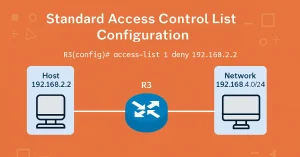How to Configure standard ACLs
Standard ACLs permit or deny traffic based on source addresses. They differentiate routes on a network using the IP address. The port and destination of the packet are not evaluated. Standard ACLs only contain a list of addresses or address ranges and a statement as to whether access to or from that address is permitted […]

